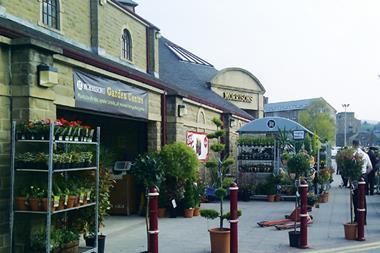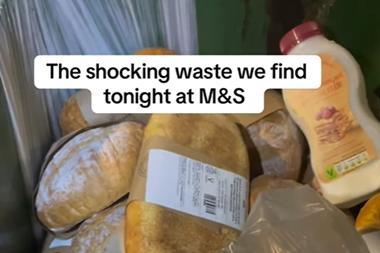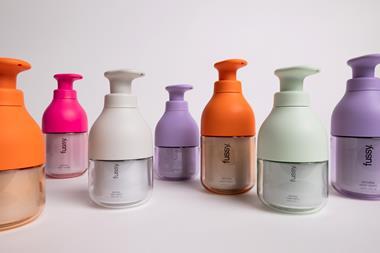With the public now facing a hosepipe ban, is the food and drink industry tackling its water use or does some complacency linger?

Hosepipe bans, low-running rivers and severely depleted groundwater levels - 18 months of exceptionally low rainfall have left England in the grip of the worst drought for 30 years.
Much attention to date has focused on how the farming sector is coping, but interest is now moving down the supply chain. With more than 20 million consumers affected by hosepipe bans, businesses in all sectors are under increasing scrutiny to show they, too, are helping to conserve water.
This week, the Environment Agency called on all companies to carry out water audits and join households in saving as much water as possible.
With an estimated annual water consumption of 252 million cubic metres - 10% of all water used for industrial use in the UK [Defra Food Industry Sustainability Strategy] - the food and drink industry is one of the country’s most significant water consumers. So how is the drought changing attitudes to water management in the sector, and what are companies doing to cut consumption?
“There needs to be a radical change in how we use water and the only way is stricter legislation and higher prices”
Graham Mann, H20
At Anglian Water’s business division, director Bob Wilson is well attuned to the water management challenges faced by food and drinks companies. Anglian’s catchment area includes some of the most drought-stricken parts of the country - the company this week proposed buying surplus water supplies from the Midlands to better cope with the drought - and it has an unusually large number of food and drinks companies on its books, with 30% of Anglian’s business customers involved in food and drink. And the water company has been working closely with customers to develop water strategies.
Water has not always been a high priority for businesses, Wilson says, but attitudes are changing fast. “Companies are becoming much more aware of their own CSR obligations and are realising they have to take water more seriously,” he says. “Businesses are concerned that their customers are facing restrictions through hosepipe bans, and they want to be seen as responsible.” Dealing with unidentified leaks is often the quickest way to slash water use - “so that’s what we tend to look at first,” says Wilson - but “employee engagement programmes” involving staff training and awareness building, can also be effective, he adds.
And when companies do decide to take a closer look at their water use, savings can be substantial. Last year Anglian worked with Weetabix at its factory in Burton Latimer to identify and fix a large underground leak that was wasting 15 million litres of water - worth £100,000 - a year. Anglian also helped Greene King benchmark 90 pubs on water efficiency, leading to average water savings of 16% year-on-year.
Relatively cheap
John Sullivan, quality and compliance manager at Thames Water, agrees spelling out the financial cost of water wastage is key to getting companies to take water more seriously. But doing so is sometimes easier said than done, he admits. Gas and electricity prices have soared to levels where no company can afford inefficiencies, but water is still comparatively cheap, he says. “Water isn’t always valued on a par with gas and electricity - someone might install energy-saving light bulbs but will not necessarily see water as a priority.”
The relative cheapness of water has prompted some to call for water prices to go up substantially - or for businesses to be given similar restrictions to the hosepipe bans, in place since 5 April.
“There needs to be a radical change in how we use water, and the only way to do this is to have stricter legislation and higher prices,” says Graham Mann, a senior partner at consultants H2O, which has worked with Asda and McDonald’s on water management issues.
But there is good reason temporary use restrictions have focused on consumers to date, says Wilson. It is far more difficult for business to all of a sudden cut down than for a consumer to not water their garden, he says. Plus, he adds, residential customers do account for most water usage - in Anglian’s case, 80%.
FDF director of sustainability Andrew Kuyk also says many manufacturers have already put in place water efficiency measures. “At the moment, there is nothing in particular that food businesses need to do over and above what they are already doing,” he says.
Water companies and Defra still believe the drought can be managed without major intervention in public water supplies. “In the short term, the impact of the drought will be much more on the environment than businesses,” Kuyk stresses. This is echoed by Dairy UK, which says some of its members with their own boreholes have been approached by the Environment Agency to voluntarily restrict how much water they are drawing, but overall companies have not reported problems. “All new dairy processing plants work very hard on water recapture anyway,” a spokesman adds.
That isn’t to say the current drought won’t prompt some longer-term strategic reviews for food and drink companies. If parts of the UK develop continuing problems with severe drought, more companies will consider investing in their own water-holding tanks to ensure they have independent access to water if water use gets restricted, says Kuyk.
But would drought actually put companies off manufacturing food in the UK? Not likely, believes Wilson. “In fact, interest in producing food in the UK is probably going to rise,” he says. “We are in a much better water situation than many other parts of the world, and if we make suitable arrangements, we will have the capacity to produce a lot more food”
Kuyk agrees. If anything, he says, food companies would be tempted to relocate not because of drought, but because of climate change-related floods.



















No comments yet